|
A JOURNEY THROUGH FILM AND DIGITAL PHOTOGRAPHY
_4.jpg)
I
As a practising photographer, I have been a witness to major technological changes that photography has gone through over the last fifty years. In this talk today, I will share with you some of my experiences, my own understanding of the changes and. also, how I have coped with them. I hope these will help you to get a picture of the nature of the changes and their possible impact on the future of photography.
My journey into Photography started in 1958 at a very young age. I had full access to my father’s 20 year old SLR LEICA camera with a normal lens. The camera was excellent, but it did not have any exposure meter to measure intensity of light nor any focusing aid to determine the distance of the object. There was no operating manual for the camera either. I would expose a full roll and then wait in suspense for a shop nearby to process the film and give me prints. I learnt the hard way through trial and error. I find the knowledge I gained extremely handy even today,
It was in the year 1970 that I bought a CANON camera with built-in exposure meter and focusing aid. I also acquired a normal lens, a telephoto lens and a wide-angled lens. However, I was never happy with the prints I was getting from outside. So I bought an enlarger as well.
I used nothing but black and white films until the year 1970 when Istarted shooting in Kodachrome for colour transparencies first and then colour negatives. I used to send my Kodachrome to Kodak, UK, for processing and was extremely happy with it. But the quality of printing of colour negatives available those days would never satisfy me. The colours I would see while taking a picture would seldom look the same in the printed product. I tried to make colour prints at home but it was not good enough. Later in 1990, I learnt colour processing and printing at London Metropolitan University. I had no idea then that digital technology would overtake manual printing so extensively.
1_3.jpg)
II
Digital camera arrived in the late 1990’s in a big way. Photographers have slowly got used to its new ways. Many, like me, have embraced the new mode today without discarding the trusted old form.
I was initially skeptical about digital photography Friends, who had embraced the digital photography, would talk to me about its advantages and it did not take me too long to adopt an open mind to it. So, with some hesitation, I invested in a Digital SLR camera in 2003. It was not easy to begin with. I needed time to understand its exposure capability and discover the secrets of how to control the quality of the end product. It took me many days of studying the Operating Manual of the digital camera, aided by practice and advice from peers who had already “gone digital”, before I came to grips with the new technology. Every time I handle a new digital camera now, I have to read the camera manual closely to understand its features and how best it can be used for my work.
I first realized how extensively professional photographers from all over the world have embraced the new technology when I visited China in 2006 at the invitation of the Chinese Government.. I was among fourteen international photographers on a three week photographic tour in Xinjiang province. I discovered that everybody was on digital. I was also carrying my digital SLR NIKON D100 along with my film camera although it had become nearly obsolete at that time. All the others had much more powerful ‘full-frame’ digital SLR cameras with them. I continue to be in touch with many professional photographers around the world. There are very few I know who do not use the digital camera.
I have been using digital camera for seven years now, but I consider myself to be very much in the learning stage. Unlike the earlier film camera where the technology had stabilized and changes were gradual and slow, the pace of change in digital photography takes your breath away. The pressure to keep abreast of changes is much greater in the digital age. That is a major challenge to people who dislike change and are more comfortable to work in a stable environment.
There is, however, a new generation of photographers who are growing up entirely on the digital camera. For them only digital cameras, digital processing and ink jet printing make sense and film cameras are history. Many will never bother to learn about film cameras. I use both forms. My work has use for both types. I prefer using a film camera with black and white film when I take black and white pictures.
I cannot really say digital camera has made a difference either to my style or to my approach to photography. I take photographs of what I see and what appeals to my senses. It hardly matters what camera I use, whether it is a pinhole camera or a Linhof, as long as I am in control of the equipment and know what results it can give me.
III
The most important change digital photography has brought is that it has done away with films. Digital cameras capture images on photosensitive electronic sensors while a film camera uses photo sensitive films to do that. Once an image is captured, the file is stored on a memory card held within a digital camera.
If I were to list on the back of an envelope the differences between film and digital photography that are relevant to practising photographers, I would put them down as under :
Film :
- Better at capturing detail in whites and blacks
- More forgiving of minor focusing issues
- More forgiving of exposure problems
- Film resolution is higher than digital resolution (unless you buy an expensive high end digital camera)
- Film can take up a lot of space
- Film is a continuing cost
- Film must be developed before viewing
- Lower initial cost
- Unless you have a darkroom with printing facility or a scanner, you are dependent on the lab to digitize your images and edit them.
Digital :
- Higher initial cost but very low running cost.
- Can lose details in whites and blacks ( except high end digital cameras)
- Low light photography has now become a joy specially with high end digital cameras and you don’t have to carry a heavy tripod all the time.
- Images can be viewed immediately and exposure and other elements of photographs can be rectified immediately specially with live view cameras.
- As the whole process is instant, photo-journalists can send their photos to their respective office/clients instantly without carrying any developer, scanner etc.
- Memory cards are small so requires less space to carry. One memory card can store more images than a dozen rolls of film.
- You can edit your images without processing and scanning. Scope of manipulation is more if at all desired.
An additional advantage of digital cameras is that they allow you to change ISO settings instantly. You can be shooting images on ISO 200 one moment and then, if you want, increase the camera to ISO 2000 or even higher in the next image. If you were using a film camera, you would need two separate cameras to do that, or at least change the film .
Both digital and film cameras are capable of taking quality images. You have to decide what best fits your photographic style and budget. Initial capital costs of the digital mode are higher, but once that is absorbed, photography becomes much less expensive than before. The digital mode has freed processing from the messy dark room and its mysteries. Anyone with a digital camera, a desk-top computer and an ink-jet printer can get reasonably good prints and share them with others instantly through the internet.
Please do not think from what I said above that film photography is dead. Film photography is very much alive. There are photographers who are not comfortable with the digital mode just as there are others who actually prefer film cameras to digital cameras. They continue to work only on films. At the same time, many professionals use both types as I do. I believe digital cameras have expanded our range of options and added a powerful tool to our armoury.
By eliminating films, digital photography has brought down the cost of taking a new picture to a level that is next to nothing. Time was when photographers had to think of the cost of the film and economize on the number of shots they were going to take. By freeing cameras of the burden of films, digital photography has removed that constraint. Photographers now take as many pictures as they like, as often as they are in the mood to do so. There are cameras everywhere, in all shapes and sizes, even on mobile telephones. I have no doubt these will proliferate more with time.
In film photography, it was necessary for a photographer to learn photography well in order to take good pictures with a good camera. He then had to depend on expert professional help for processing the film and for printing them manually. The arrival of computers (inside cameras and outside) in digital photography has made things simpler. It has made photography accessible to many more people than before. In digital photography, you do not really need a long period of training to produce reasonably clear images. All you do is to get hold of a digital camera, find an object and click! Millions of photographs are being taken everyday by millions of people.
I am, of course, exaggerating. While the facts above are not unreal, they are true only up to a point as most of these are no more than “snap shots”. If you take photography seriously as an independent art form, a photographer must face questions of aesthetics, emotion and intellect and make room for them in his work. Cameras may have changed but artistic norms have not. At the same time, I must admit I have come across stunning photographs taken with compact digital cameras or mobile phones by amateurs. I regard this as one of the most positive aspects of the so called “Easy Digital Era”. Basically, it is the person behind the camera who creates a picture.
I wonder at times what will happen to this flood of digital data on storage devices. How many of them will be used? Admittedly, demand for images is also growing. At the drop of a hat these days we are being asked to produce photographs as proof of identity. Demand for this type of portraits is growing exponentially. But the supply will continue to outstrip demand by far.
The meaning of the word ‘lifelong’ seems to have changed. Our life spans are getting longer while lives of equipments are getting shorter. Today’s digital camera is different from yesterday’s. Tomorrow will see another type. If some problems surface on your camera, or the storage device becomes obsolete, how will digital photographers cope? How will they store their work and retrieve them if technology becomes obsolete so fast? Will the works disappear into digital void? I do not think we have found answers to these possible problems yet.
IV
The word Photography is derived from two separate Greek words. ‘Photo’ means light and ‘Graphien’ means drawing. I believe the essence of photography is exactly that. We use a camera to draw pictures with light.
As we know well, many great painters have made use of photography to create outstanding art. Names that readily come to mind are Vermeer, Canaletto, Degas, Manet, Munch and our own Gaganendranath, to mention just a few.
The digital age has further reduced the distance between the two art forms. Today, a photographer can transfer an image from his camera to the Computer screen very easily and then touch it in various ways much as a painter would on a canvas. It is common these days to find artists owning digital cameras. We are beginning to see photographers and painters producing art (mixed media) that are a product of photography and painting.
What matters in good photography most is the eye of the photographer, the ability to see the extraordinary in the ordinary. To translate an image on film or on a Sensor, you must first be able to see it without a camera. Technology is only an aide to artistic expression. It does not matter so much what equipment you use as long as it enables you to produce good work and communicate it to viewers effectively.
As you know, light is the most mysterious of all matter. It changes all the time. And when it changes, it impacts on the character of objects it lights up, revealing many subtle and newer dimensions. Like the face of a bride lit up by dusk’s soft glow, routine objects transform themselves magically when viewed under the right light. There is so much beauty in the things that are strewn around us, so many tales untold and music unheard. It is our job to capture these moments.
As a photographer, I am fascinated by the ‘dance of light from one leaf to another’, to borrow Tagore’s words. I try to capture moments when objects get transformed under light’s magical glow, when the real tends to become larger than real.
Mala Mukerjee
GENDER IN PHOTOGRAPHY
A woman with a camera today is not an unusual sight. Not if the camera happens to be small, such as a small digital camera, an instamatic or a mobile phone cum camera. But how many of us can avoid a sense of disbelief if we are told that a woman makes a living out of photography? Our eyes and ears are not used to the unusual. Eyebrows rise naturally when we see a woman in a so called man’s job.
Suppose you are on an aeroplane and discover at take-off time that the pilot and the entire crew are women. Would your heart not miss a beat? We all know that many men drive cars badly and also that some women are excellent drivers. But if you face a situation where two taxis are awaiting you, one with a man and the other a woman on the steering wheel, which one would your instincts guide you to?
There are jobs that women cannot do as well as men can, as there are tasks that elude men. Men are born physically stronger than women. Physical strength can and does matter in many instances. But if you consider jobs in fields that are level, you will agree that women often do a better job than men. They apply themselves harder, attend to details better and are less happy to compromise on quality.
We are used to seeing women in kitchens, but don’t we always ask for a man when we want food cooked in large quantities? But you will not yet find too many instances where men are taking over traditional roles played by women. More and more women, on the other hand, are entering areas which used to be the preserve of men.
Like in any other art form, be it literature, painting, sculpture or even music, gender has very little relevance in photography. By looking at a photograph, it is impossible to tell if it is the work of a man or a woman. The camera is neutral. What matters most in photography is the eye that sees an object.
But can one dismiss the gender issue so easily?
THE ROUGH AND THE SMOOTH
Let me share with you some of my experiences.
I started photography when I was a kid. I received nothing but encouragement from everybody. But when the time came to leave school and I wanted to opt for the Science stream, not many thought that was a good idea. An uncle of mine, and he loved me dearly, reacted in surprise, ‘Why Science? That is not the right place for a girl. Take Home Science instead. That will prepare you better for life.”
Girls at our homes are taken through cooking drills as a matter of course. But not boys. Games and athletics are for them. I was still in school when I joined the Rifle club in Kolkata. There was a lot of opposition in the family. But I did not always win. My dream was to be an engineer. That I am not one still rankles.
Let me do a fast forward to the end of 1993 when I returned to Mumbai from the UK.
Customs rules in India those days permitted professional photographers on transfer of residence to import equipments free of duty up to specified values. I had studied their rules carefully and had brought back some equipment with me. But the Customs in Mumbai had a different view. How can a woman be considered a professional photographer?
They confiscated my equipments and forced me to pay penalty for violation of rules and duty at exorbitant rates. I pleaded with them. I showed them evidence of my professional work in India. Nothing worked. Could I produce a post graduate degree in Photography? They asked me. I did not have one. Even today, not many professional photographers I know have post graduate degree in photography.
The story ended happily for me. I won the case when I produced evidence of money I had earned in the UK on professional assignments. But it took me two years of battle with Customs authorities, many days and nights of frustration and intense anxiety.
Those who are familiar with my work will know that my photograph of the last ball in the tied Cricket test match between Australia and India in Chennai in 1986 had made headlines. Noticing my camera on my shoulders, the editor of a leading newspaper group came over to meet me around lunch time. He sat next to me for a while exchanging pleasantries. The match, as we all know, took an exciting turn in the closing stages and ended in a tie.
When I came home at the end of the day, I got a phone call from the editor. Did I capture the last ball? He asked. When I told him I had filmed every ball of the last over and much else, he asked me if I would mind giving him the pictures for use in his paper the next morning. I agreed.
On a visit to Chennai some years later, I heard a slightly different account of the episode doing the rounds. According to it, the editor had apparently sat next to me while the last ball was being bowled and gave me detailed directions on what to shoot and how!

The Last Ball, Chepauk 1986
Not so long ago, a famous film director asked me to take pictures of a famous actor in a Tollywood studio setting. The official photographer for the film did not like it one little bit. He told me summarily to vacate the spot I had chosen and find another.
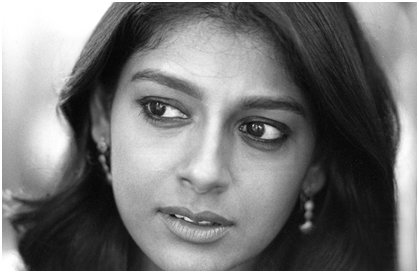
Nandita Das, Tollywood 2004
Sometimes, prejudices work in my favour. People, who would not ordinarily agree to being photographed, smile indulgently and pose for me. To them, I am an amateur playing about with an expensive toy. Why bother taking a stand on the right to privacy with a woman?

Yes and No, Beijing 2005
CHOOSING ONES NICHE
In my work, I often get my material from dilapidated buildings, discoloured walls and discarded materials. Men on the streets find this habit of mine very odd. They stop dead on their tracks when they see me near a dump heap. Then they come near and peer over my shoulders. What is this woman up to?
At times, they are deeply suspicious of my motives. I was once photographing a broken door of a neglected old building in North Kolkata. Out of nowhere appeared a visibly irate lady. She accused me of being an agent of some predatory real estate promoter. I withdrew hastily.

No Trespass, Kolkata 2005
I always prefer subjects that appeal to my senses. I accept work only if I am comfortable with the surroundings at the place of work. I know it is not possible for a woman to enter every field of photography.
I have done a bit in news photography in my career, but will I ever want to be in situations where I may have to run for my life braving batons and bullets? No.
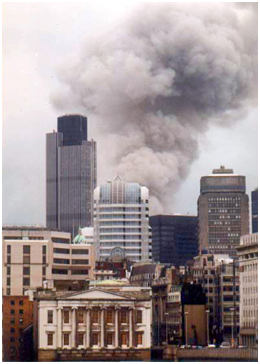
City under siege, London 1993
A fellow student in my London days chose to spend many winter nights in Waterloo station with pavement dwellers in cardboard boxes. A woman photographer I know well has produced powerful work on sex workers in Mumbai. She lived with the ladies of the night and spent many hours to gain their confidence before they would let her photograph them.
I have great admiration for such work. But I know that those fields are not for me. A photographer, whether man or woman, must know what suits his/her style, temperament and taste best. If you analyze the work of women who have excelled in photography in India, you will find that they have all selected their niche very carefully.
I like travelling and do a lot of travel photography. But only once have I had to compete with an international group of male photographers. That was in 2006 when I was invited by the People’s Republic of China to participate in a three week long photo event. I was part of a group of 14 photographers from different countries. We travelled over 5000 km of very rugged terrain in Xinjiang province in the far North West of China. We would set out every morning on a bus, take hundreds of photographs on the way before reaching a new city in the evening. We would check in a hotel, dine and work late on our lap tops to download our day’s work. Back on the bus again on the dot at 9 am the next day !
The tour was very tough but the experience unforgettable. I made many abiding friendships which I cherish dearly. I can proudly say I have a home in many countries.

Nowhere-1, Xinjiang 2006

Nowhere-2, Xinjiang 2006
IS PHOTOGRAPHY MALE DOMINATED ?
I think I have already said a lot of things on this topic. It might be useful to make a reality check by considering the views of a cross section of men and women who are engaged in photography and other creative activities related to art and photography.
Vivek Das, the doyen of industrial photographers in India, does not think photography is any more male dominated than life itself is. On why there are so few women in photography, he feels a likely reason is that it does not appeal to women greatly. Christopher Taylor, the well known English photographer who has worked in India, has a different perception. He finds male domination stronger in India than elsewhere. Christopher is also of the view that women photographers have a “different sensibility” that lends their work a “more introspective and contemplative” quality. To Julio des Matos, an outstanding photographer from Portugal, male domination is an “accident of history.” It is destined to lose its hold as, he avers, “women are much the stronger sex”.
Lisa Horvath, a professional photographer from Canada, finds male domination real but on the decline. More than their muscle, Lisa thinks men have better skills in handling studio light. They are also quicker in picking up Photoshop and other software applications, skills that very few photographers in the digital mode today can do without. Interestingly, she holds that “customers trust women more for their superior emotional maturity” and empathy with their subject.
Rahnuma Ahmed, a noted intellectual and social historian from Bangladesh, is involved in running an internationally reputed school in photography. She says she has not come across any marked change in male attitudes towards women pursuing independent careers. Despite that, she confirms that many more women are entering the portals of photography these days.
Referring to the photographer who had shot scenes of the gruesome Mumbai massacre on 26th November 2008, Gita Doctor, a well known art critic and journalist, observes that women cannot be expected to match men in every situation. Fashion photography is dominated by men, but then, she notes, “there are women who do industrial photography with equal skills.” There are no set thumb rules.
PHOTOGRAPHY AS A CAREER FOR WOMEN
A career in Photography is obviously not a bed of roses. With all its expensive accessories -- cameras, equipments, lights and computers -- it can be quite daunting for a woman. But yet, women are being attracted to it in larger numbers. Some of them are producing work of the highest order.
Are they doing the right thing? Or is it the first flush of the excitement that digital photography has generated all around? Will it be sustained? Or will it leave many broken hearts and crushed ambitions?
I am not a pessimist. Despite all its difficulties, I believe the field of photography is wide enough for women to find slots to suit their mental propensities and physical abilities. Finding ones place is, to my mind, the crux of the matter. To succeed, I believe a photographer must have a sense of fascination for the art and a passion for it. These traits will help her tackle the many challenges of the trade. It is also important that she feels secure and comfortable with her surroundings.
But how wide is the scope of photography? Where does a woman begin to look for her niche? My answer to that question is simple : It is much wider than you think.
Let me try to give you a flavour of the immense reach of photography. Shall be start with ‘Adventure’? And then go on to ‘Abstract’ ? Pause at ‘Architecture’ and ‘Art’, followed by ‘Commerce’, ‘Fashion’, ‘Forensic’ and ‘Industrial’? You also have ‘Macro, Medical, Micro, Nature, People, Science, Sports, Travel, Wild Life’ and who knows how many more.
Its horizon is indeed very wide !

Darkness at Noon
I have no wish to try your patience, except to say that the above list is only illustrative. A woman can take her pick. Photography is being taught in many places today. They are there to help a woman in her search for a niche.
And yet, nobody should think it is easy for a woman to make an independent career in photography quickly. The economics of the trade are tough. It takes time to establish oneself in any profession. In the interim, there may well be a need to rely on other supporting avenues of income. This problem can, of course, be alleviated by taking up salaried jobs in newspapers /magazines or by freelancing. Nonetheless, it is important to recognize the need for capital to stay afloat in the preparatory stage.
Ms Janatul Mawa, a young professional photographer friend from Bangladesh, tells me that although more women are entering photography there, social and cultural attitudes towards women in the profession continues to be less than friendly. Not many newspapers encourage women on their rolls. And worse, although no wedding is complete without photographs, the marriage market is not at all disposed well towards a bride who has a camera slung on her shoulders !
While these realities cannot be ignored, I take enormous comfort from the fact that their hold is weakening steadily. How else do we account for the growing popularity of photography among women everywhere ?
To sum up, there are opportunities for women in photography. The number of women in photography is on the rise. I have no doubt this trend will accelerate when we have more facilities for training. I also believe that women, who are in the profession today, have a role in facilitating the future for women in photography. The better the quality of their work, the stronger is the demonstration effect to establish that women can do it well. This is happening.
Finally, allow me to digress a little before I draw the concluding line.
An important aspect which many young people tend to neglect while choosing a career is to remind themselves of their wider goals in life. Every woman needs to think through her priorities before considering a career. Do I have a taste for photography? Am I tough enough for it? When do I want to make a home; raise a family? Will that be compatible with my career? Will I earn enough?
And not the least, What if I do not succeed ?
These questions have to be addressed first. After all, a career is only an enabler to a meaningful life. The horse has to come before the cart. That does not mean that all our wishes will come true. Nor does it imply that our plans will never change, get reviewed, updated and revised. All it means is that our lives should have a focus.
Mala Mukerjee
CHALLEGES IN MY CAREER AS A PHOTOGRAPHER
I developed a very keen interest in Photography at a very young age. That was more than 50 years ago. I fell in love with it. It became my major hobby. I was also involved in Rifle shooting and enjoyed its competitive flavour. Music was another abiding interest of mine. I pursued them with as much seriousness as possible. I say that because the environment we were brought up on did not favour pursuing too many hobbies. We were expected to give academics moreattention. From that point of view, I must consider myself lucky that I was able to have more than one hobby.
Then I got married. Looking after a house and raising a family became top priority. Shooting cartridges dropped out of my life, but the other form of shooting, photography, held its place. I would like to believe my interest in music never waned. But if I look back at the facts dispassionately, they tell a slightly different story. Photography has been encroaching on my time imperceptibly. I am only a listener of music now !
The thought of making a career in photography, however, took much longer to enter my mind.
UNDERSTANDING LIGHT
When I first set my hands on a camera, there was no exposure meter, no focusing aid. Nothing was automatic or programmed. Understanding light was the greatest challenge. It had to be done by trial and error. Gradually, I began to understand the mysteries of light and learn how to control it to get the pictures I wanted. It was great fun.
I would later start dabbling in developing black and white photographs. There were hurdles. I would set up my dark room in a bathroom in our flat, but I had to shut my shop and hide my equipments whenever there was a guest. I had once covered the enlarger under a white sheet when a guest came. My unsuspecting guest was frightened out of his wits when, late one night, he stepped in and saw the shrouded equipment in a corner aglow in the faint red light -- I had forgotten to change the bulb!
Colour posed other problems. Getting the right colour on transparencies was simple enough, thanks to Kodak, UK, but not colour prints. There was no help available there. I had no option but to learn colour printing.
TEACHING PHOTOGRAPHY
It was only when my son grew up that I started spending more time on photography. That happened in Chennai. A well known school in Chennai, The Krishnamurthy Foundation of India (KFI), offered me a teaching job in Photography. I was delighted. For me, a self-taught photographer, it was a big challenge. I was forced to delve deep into the subject. I worked very hard at it. I think it helped me to become a much better photographer.
In this digital age when we think photography is so simple, we often forget how important it is for photographers to comprehend the intricacies of light and the fundamentals of the science behind photography. We have wonderful technology these days. They are a great aide but they do not always go far enough when it comes to having full control over your work, unless you have a good understanding of the basic principles behind the art of taking and making pictures. Besides, the eyes of a photographer must first be able to visualize and frame the picture without the camera. The photo software we have today is, no doubt, very versatile and powerful. But it cannot replace our eyes. Not yet.
As I came to know more people in the profession, offers of work started coming my way. I had a bit of luck when a work of mine viz., the photograph of the historic last ball of the tied cricket test match between India and Australia in Chennai in 1986, got wide publicity in papers and magazines. It so happened that mine was the only photograph of that magical moment. It made me better known.
It amuses me to think that the photograph of that historic event resurfaces periodically in cricket literature all over the world. Frankly, I have never really had more than a passing interest in sports. I have not done sports photography professionally before or after that event.
It was my passion for photography that sustained my interest in it. Profession came along the way slowly to add to my passion for it and complement it.
SURVIVING AS A PROFESSIONAL
I soon found out how tough it was to make a decent living in photography, Money in photography was poor. You needed to do lots of work to make a living, also find the right connections to get industrial assignments. Setting up a studio needed capital and the skills to look for work in the market place. I did not have those skills, nor the taste for tasks of that kind. You also need to have a settled base in a city to pursue the trade professionally. That was denied to me. Like a gipsy, I have always led a peripatetic life.
So I chose a different way. I started holding exhibitions of my work and selling them through them. Instead of going to the market to look for work, I set up my own mobile shop, thanks to the encouragement of generous art critics, art lovers and artists,
I continued to do professional assignments. I have collaborated with many journalists who wrote in newspapers, journals and magazines on History, Art, Artists, Tourism and on other subjects. My photographs have appeared on the cover of many works of fiction by authors in India and abroad, also on coffee table books on places and people. There were unexpected rewards for my free lance work of this kind. I came in close touch with several great names in the world of Art. I remember with fondness and nostalgia the generous friendship of F.N Souza and Jehangir Sabavala. Another great artist I came to be intimately associated with because of my camera was Sarbari Roy Chowdhury. I must also mention K G Subramanyan who I met when he, unexpectedly, dropped in to see my solo exhibition at Kala Bhavana, Santiniketan. They have all passed away now, but the kindness and affection they had for me and for my work will remain etched in my heart for ever.
I think it is only fair that I mention some of these priceless rewards of my profession. We we do not often remember them while talking about challenges.
Exhibitions became my main vehicle for generating sales. When the digital age dawned here in the mid 1990s, my works on the Jantar Manar series were used on a virtual photography gallery (www.internetindia,com/ashowkase). I believe it was the first photographic gallery in India on the web. Today, I have my own web site (www.malaphotogallery.com).I manage it myself.My virtual gallery on the internet has given me another vehicle for generating sales, It is open every day and every night for the world to see. Over the years, I have exhibited my work in all major cities in India and also in several places outside India from the west to the east.
PEER PRESSURE
I got a chance to live in London in 1990. I was very keen to learn colour processing. And so I enrolled myself in an institution affiliated to a University in London. There I had to compete with photographers from many countries. The pressure to produce work that was different from what others did or from what I did earlier, was great. I had to experiment and struggle to bring freshness and originality in my work. And yet, it was in London where my Jantar Mantar series, which I started before my formal training in photography, was first appreciated widely.
I learned a great deal, thanks to a liberal and enlightened academic ambiance at the University, the presence of talented photographers as my peers and the guidance of well meaning teachers who were never shy of telling us where we were falling behind.
The challenge was to take criticism from teachers and peers and to learn from them. The course I did in London was meant specifically for photographers but it covered a wider subject of Applied Art and Design Studies. I have always had a fascination for Art. As a young woman I had been visiting famous museums and galleries across the world whenever an opportunity arose. I still do when I get a chance. Three years at the University helped me a lot to widen my horizons.
DIGITAL REVOLUTION
Another challenge was waiting for me when I returned to India a few years before a new millennium dawned. That was the digital revolution. Having spent so long in mastering the film Camera and the secrets of printing colour and black and white, I was reluctant to throw away all that expertise and learn a new technology all over again. But my hesitation did not last long. Once I decided to go for it, I made the change-over to the digital age pretty quickly. It needed a lot of study and experimentation before I figured out how to control the new digital toy. I do all my work these days digitally.
That was a considerable challenge. It was not just learning to cope with the Digital camera, it also involved handling digital files, computer softwares, scanning old negatives and slides and digital printing. The transition needed hard work and lots of practice. Technology is changing so fast that at times I find it difficult to cope with it.
Handling negatives was much easier than handling soft picture files that you cannot touch, nor see with the naked eye without the help of computers. Computers too keep changing all the time. Even printing technology has changed so radically. Keeping pace with technology is a demanding challenge for all photographers today.
In the rapidly changing technology scenario, I hope we will have the right software in future that will read today’s digital picture files.
IN THE COMPANY OF INTERNATIONAL PHOTOGRAPHERS
Possibly the greatest challenge I faced was in China in 2006 when the Chinese Government invited me to take part in a program named " Photography Tours of 100 Chinese and Foreign Photographers to Xinjiang in the Four Seasons," I was part of a team of 14 international photographers, primarily from Europe and the USA. For a full fortnight, I travelled through China's North Western deserts in a bus for 12 hour tours every day. With me were several famous photographers from all over the world. They were carrying with them the most expensive equipments, while I had my modest NIKON F90 X film camera and a NIKON D100 digital.
Later, the Chinese Govt displayed selections of pictures taken on the Xinjiang project in several exhibitions around the world, including India. It was satisfying to see my work included among the works of other photographers on the tour several of whom had formidable international reputation.
Over the years I have developed links with the Chinese photographer community and I visit China regularly and also exhibit my work there periodically.
CHALLENGES NEVER END
For photographers who, like me, prefer to be independent and choose not to work on photo journalism, industrial photography or fashion photography, the challenge of surviving in a fiercely competitive world is never easy. Taking good pictures is always a challenge. For a professional, selling them is an additional challenge.
These never end.
THE LATEST CHALLENGE
For me, a pressing challenge now is to find lighter photographic equipment that my weakening shoulders will be able to stand. Will technology come to my aid? Let me hope so.
Mala Mukerjee
|
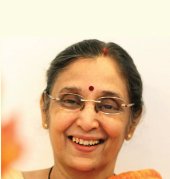
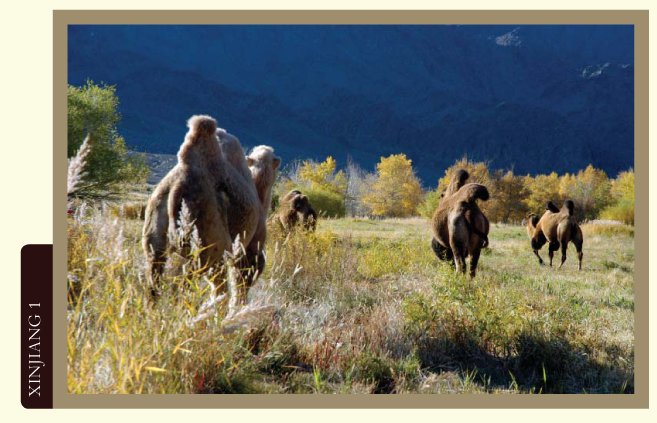
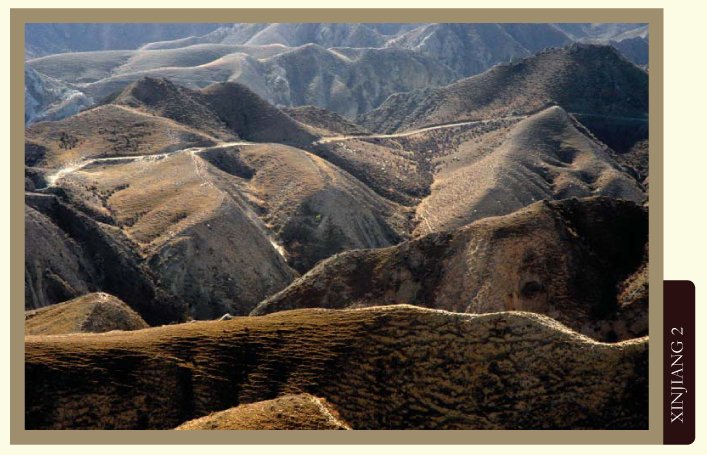
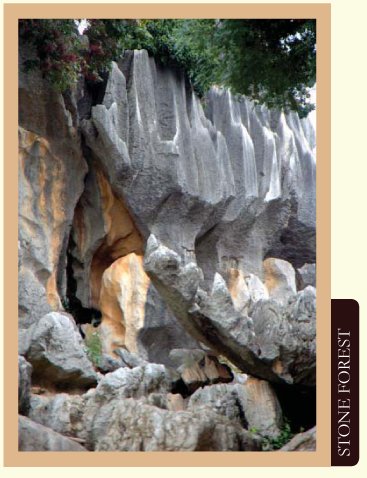
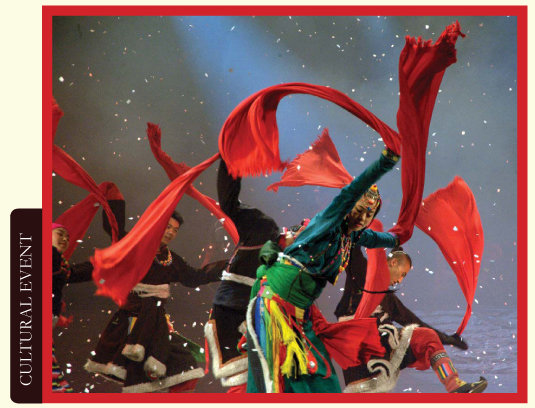
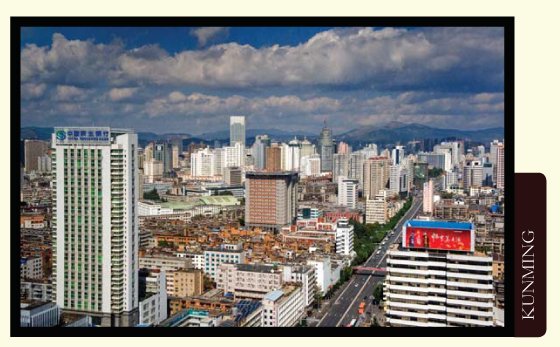
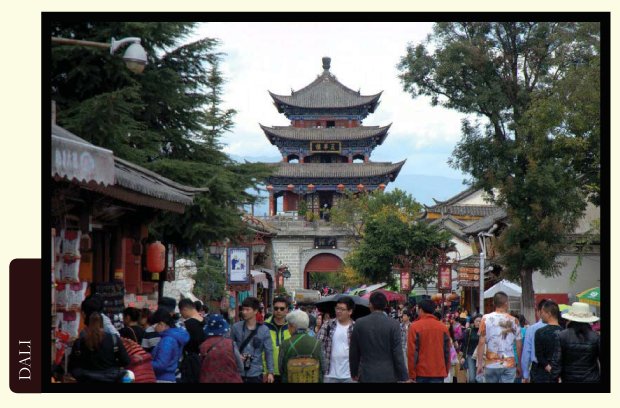

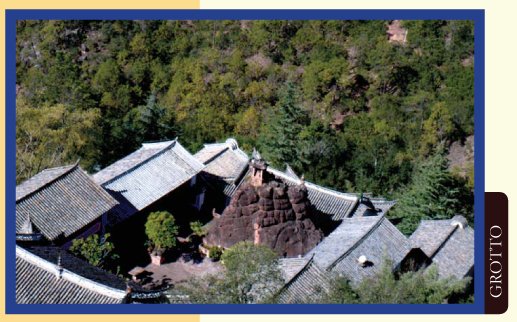
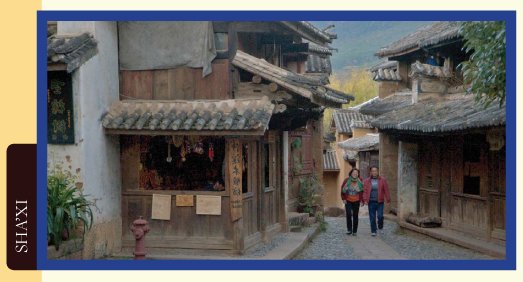
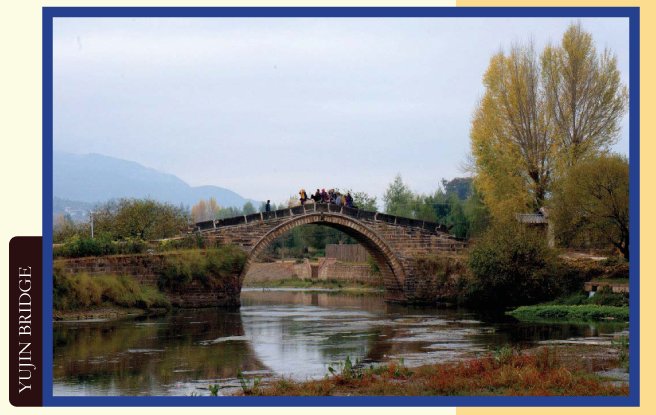
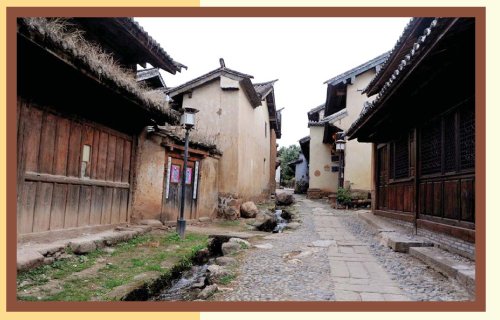 YANGSI ON TEA HORSE ROUTE
YANGSI ON TEA HORSE ROUTE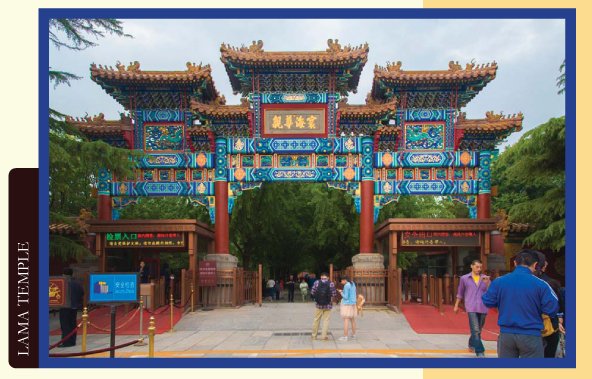
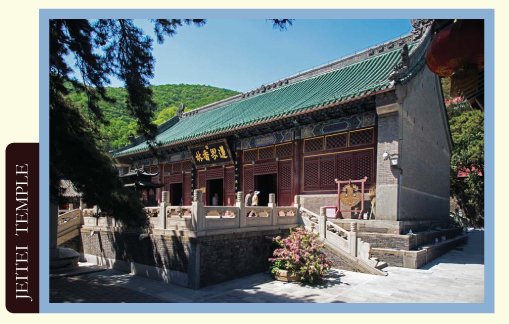
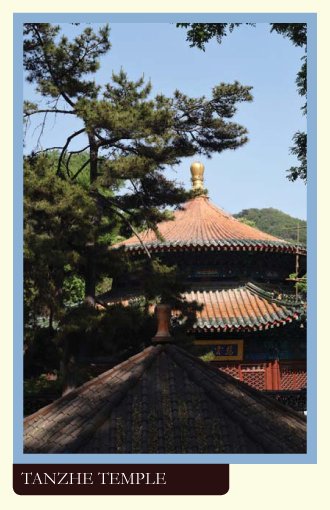
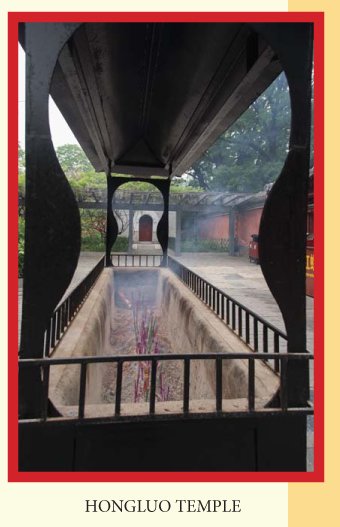
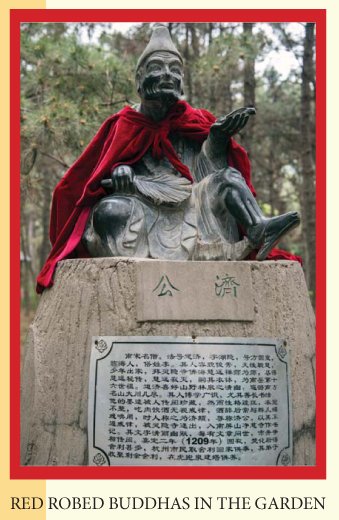 RED ROBED BUDDHAS IN THE GARDEN
RED ROBED BUDDHAS IN THE GARDEN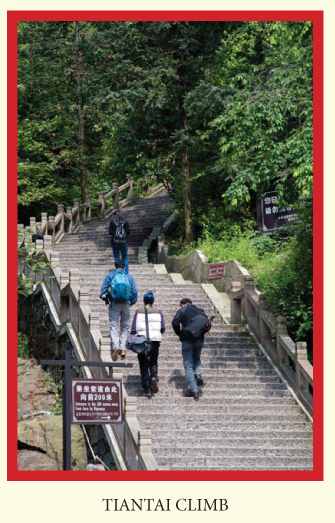
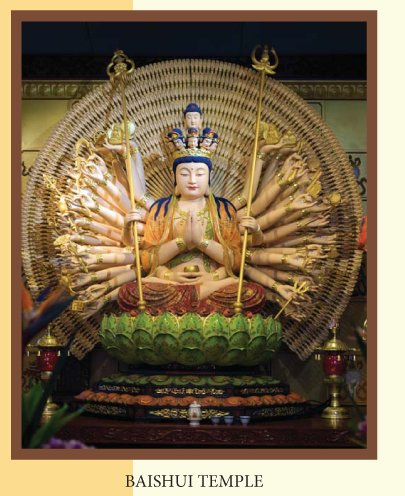
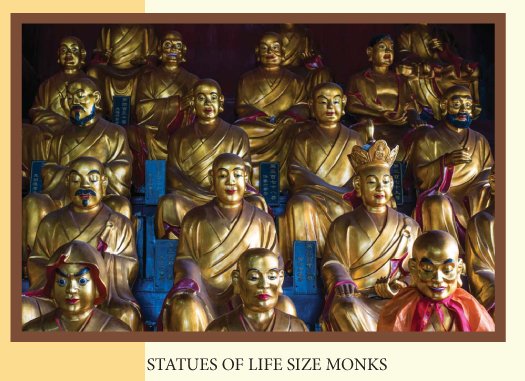
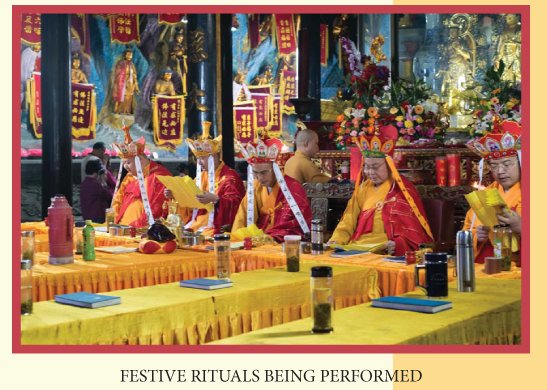
_4.jpg)
1_3.jpg)







